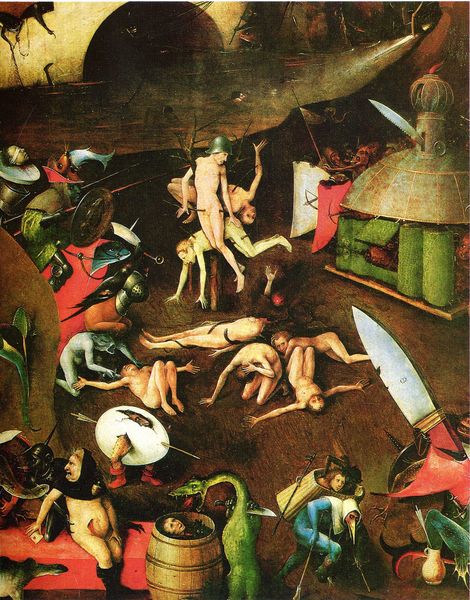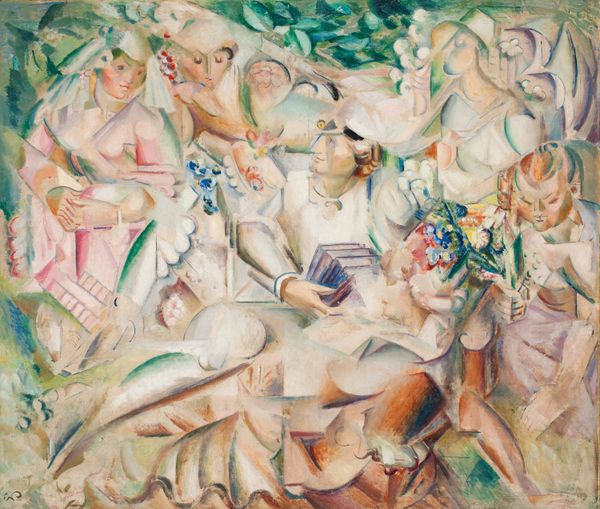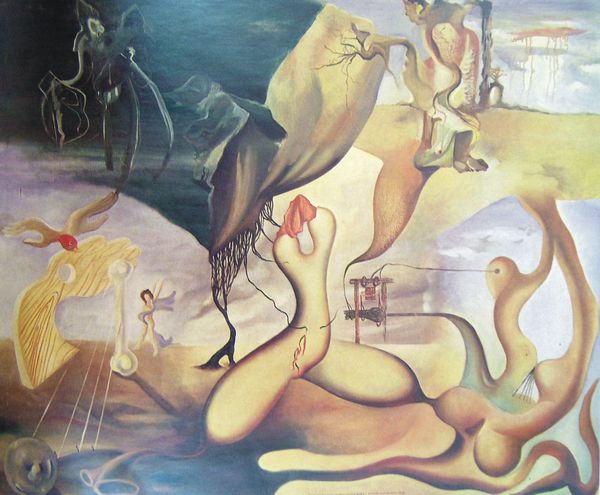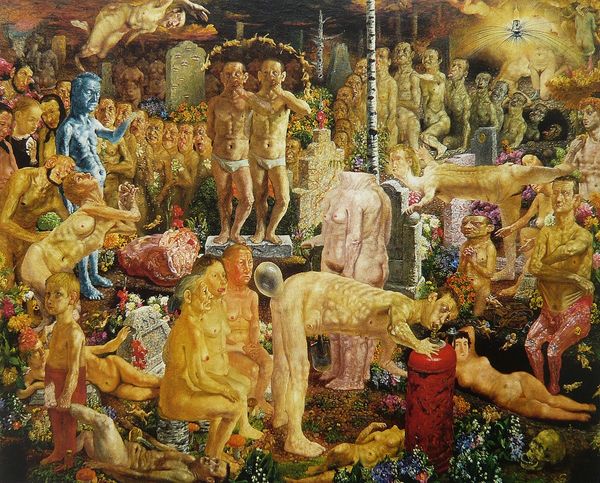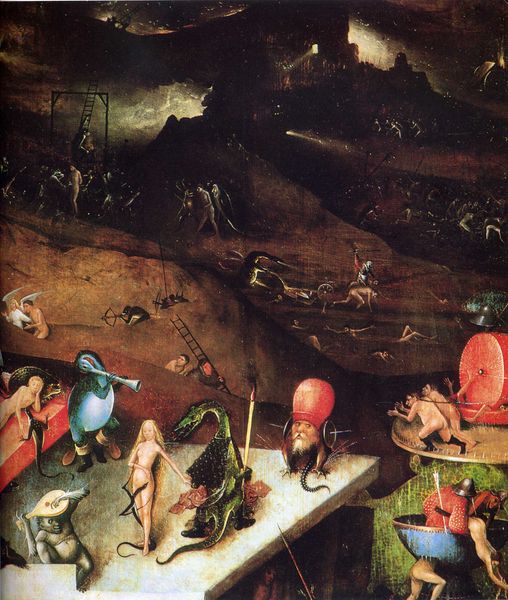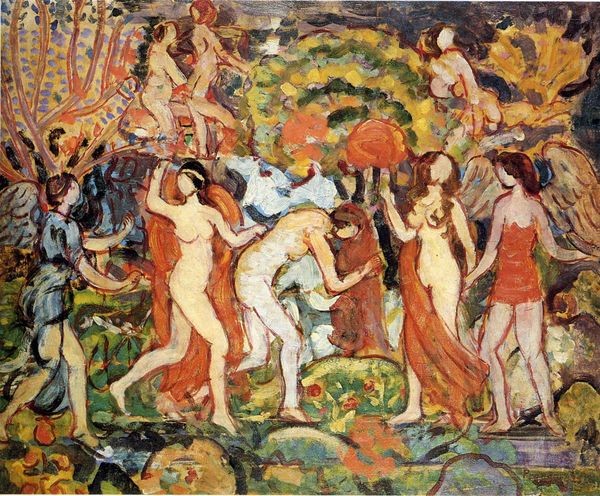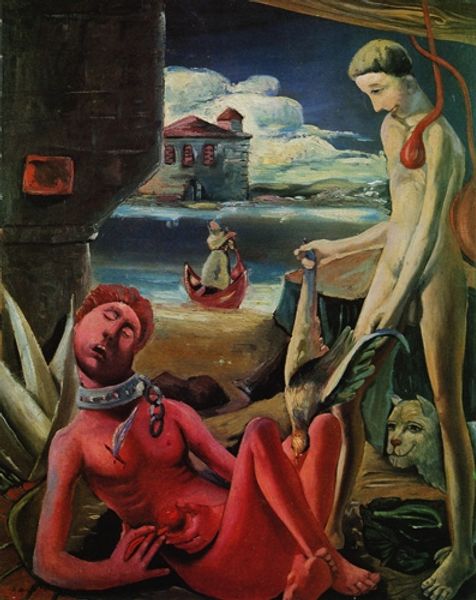
Copyright: Public domain
Curator: Welcome. We are looking at a section of Hieronymus Bosch’s "The Garden of Earthly Delights," an oil on panel, likely painted around 1500. It’s currently housed in the Museo del Prado in Madrid. Editor: It's quite unsettling. All those pale, naked bodies...they look so vulnerable, yet there’s also an unsettling energy in this crowd, like they’re sleepwalking into…something. The use of those vibrant reds amidst all the paleness adds to the effect, drawing the eye right in to the most disturbing details. Curator: Indeed. The panel demonstrates sophisticated control of composition, spatially it is broken up by layering into various planes. Figures are grouped rhythmically using contrasting palettes to distinguish between groups of active participants in the unfolding events. Editor: Active, certainly, but to what end? Consider how frequently certain fruits appear--strawberries and cherries are held aloft, placed on heads like grotesque crowns. These have always been linked to notions of temptation, earthly delights which seem, in this context, ultimately hollow. Look at the hollow gaze of many of the figures and the absence of emotional connections. It feels almost… performative. Curator: Note the flattening of perspective which invites us into this very busy field. Each of these fantastical elements can be interpreted symbolically, operating according to medieval beliefs, offering some insight into the morality and the consequences that come about when acting on temptations. Consider the textures and forms that draw the eye around and force a dynamic experience onto the audience that the subject itself seems unaware of, caught up as it is, within itself. Editor: So the formal structure mirrors the symbolic content? I think it's fascinating how Bosch uses familiar imagery, fruits, animals, human bodies, and imbues them with layers of psychological and moral meaning that continue to unsettle us, some 500 years later. The continued fascination shows the persistent symbolic meanings found in the world around us. Curator: Agreed. It leaves me pondering on the effective capacity of forms arranged in such dynamic composition and their continued resonance across the centuries. Editor: Yes, it really showcases how visual symbols hold emotional weight, echoing through art history, constantly reinvented, re-contextualized, and reused again, they're incredibly revealing!
Comments
No comments
Be the first to comment and join the conversation on the ultimate creative platform.
